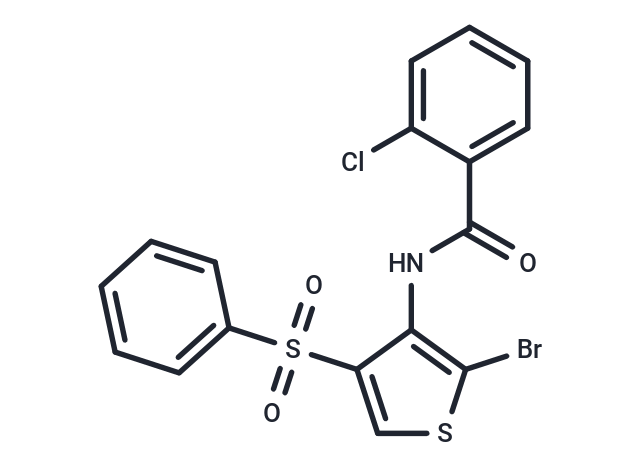Shopping Cart
- Remove All
 Your shopping cart is currently empty
Your shopping cart is currently empty

BNTA is a potent extracellular matrix (ECM) modulator. In a rat model of arthritis, BNTA modulates arthritis by promoting the synthesis of cartilage structural molecules on chondrocytes through the induction of superoxide dismutase 3 (SOD3) and regulating chondrogenesis through superoxide anion elimination.

| Pack Size | Price | Availability | Quantity |
|---|---|---|---|
| 1 mg | $84 | In Stock | |
| 5 mg | $198 | In Stock | |
| 10 mg | $328 | In Stock | |
| 25 mg | $637 | In Stock | |
| 50 mg | $892 | In Stock | |
| 100 mg | $1,220 | In Stock | |
| 500 mg | $2,450 | In Stock | |
| 1 mL x 10 mM (in DMSO) | $198 | In Stock |
| Description | BNTA is a potent extracellular matrix (ECM) modulator. In a rat model of arthritis, BNTA modulates arthritis by promoting the synthesis of cartilage structural molecules on chondrocytes through the induction of superoxide dismutase 3 (SOD3) and regulating chondrogenesis through superoxide anion elimination. |
| In vitro | BNTA (0.01-10 μM; 1-7 days) exhibits no reduction in cell viability for human osteoarthritis chondrocytes and primary chondrocytes isolated from rats.[1] BNTA (0.1 μM; 2 days) induces a significant elevation in SOX9 protein expression. Notably, BNTA markedly enhances the protein levels of COL2A1 and SOX9 in rat osteoarthritis (OA) chondrocytes induced by IL1β.[1] BNTA (0.01-10 μM; 6 hours) enhances the expression levels of extracellular matrix (ECM)-related genes, including COL2A1, ACAN, proteoglycan 4 (PRG4), and SRY-box 9 (SOX9) in human osteoarthritis (OA) chondrocytes. In IL1β-induced rat OA chondrocytes, BNTA elevates Col2a1, Acan, Prg4, and Sox9 mRNA levels, with the most significant effects observed around 0.1 μM.[1] BNTA (10 μM; 5 days) increases proteoglycan staining in ATDC5 cells.[1] BNTA (0.01-1 μM; 2 or 3 weeks) enhances anabolism and inhibits inflammatory response in osteoarthritis cartilage explants.[1] |
| In vivo | BNTA (0.015-1.5 mg/kg; intra-articular injection; twice a week for 4 and 8 weeks; Male SD rats) was well tolerated and reduced post-traumatic osteoarthritis progression following anterior cruciate ligament transection (ACLT) in rats.[1] |
| Molecular Weight | 456.76 |
| Formula | C17H11BrClNO3S2 |
| Cas No. | 685119-25-9 |
| Smiles | Clc1ccccc1C(=O)Nc1c(Br)scc1S(=O)(=O)c1ccccc1 |
| Relative Density. | no data available |
| Storage | Powder: -20°C for 3 years | In solvent: -80°C for 1 year | Shipping with blue ice. | |||||||||||||||||||||||||||||||||||
| Solubility Information | DMSO: 60 mg/mL (131.36 mM), Sonication is recommended. | |||||||||||||||||||||||||||||||||||
Solution Preparation Table | ||||||||||||||||||||||||||||||||||||
DMSO
| ||||||||||||||||||||||||||||||||||||

Copyright © 2015-2025 TargetMol Chemicals Inc. All Rights Reserved.